Bracken Bower Prize 2018: excerpts from finalists’ proposals
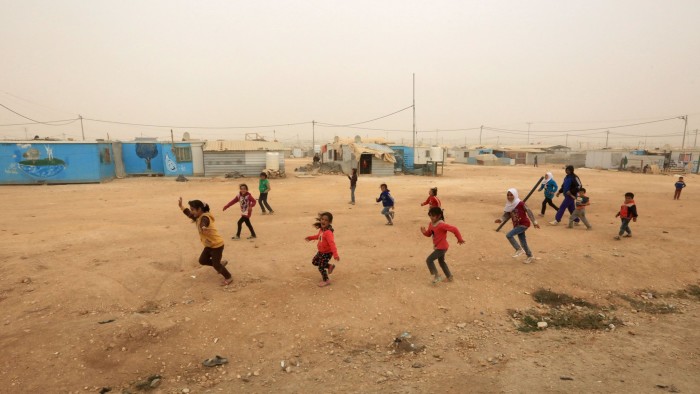
Roula Khalaf, Editor of the FT, selects her favourite stories in this weekly newsletter.
Edited excerpts from the book proposals of the three finalists in the 2018 Bracken Bower Prize.
The Serendipity Factor
Harnessing the science of coincidence for work and life
By Christian Busch
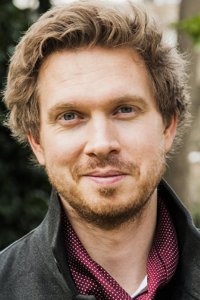
The desire to plan, to “map out” the future, is seemingly an innate human trait. Individuals, companies, and governments all structure their activity around forecasts, strategies and targets. Yet every wise individual knows that what shapes the future, for good and bad, is often the unforeseen, the unexpected, the chance event or encounter.
When we look back on the past, it seems that many of the most important things in our personal lives, in our companies, and in our communities happened by chance. What is more, while we know that the greatest turning points and transforming opportunities often occur by chance, we cannot shake the sense that some people and companies appear to have more “luck”, and subsequently more “success”, than others.
Is there something else going on? Are some people and organisations able to create the pre-conditions for these positive coincidences to happen more often?
This book develops a science-based framework for individuals and companies to help trigger and then leverage positive accidents, enabling them to navigate more successfully in our fast-changing world. It combines rigorous science with inspiring ideas and examples from around the world.
By definition, serendipity is not completely controllable, let alone predictable. However, this book shows that there are tangible ways to develop the conditions for serendipity to happen and to ensure that when those potentially transformational coincidences occur, they are grasped with both hands.
**********************************
Serendipity is not about luck in the sense of randomness. It is about seeing what others don’t, about recombining unexpected observations. It is about a conscious effort to trigger and leverage bisociations — moments when apparently unconnected, ideas or events come together to form a new pattern. Put more plainly: “joining the dots”.
When the Icelandic volcano Eyjafjallajökull erupted in 2010, many of the international attendees of the Skoll World Forum were stranded in London. Among them was San Francisco-based entrepreneur Nathaniel, who turned this challenging situation into an exceptional “TEDxVolcano” event. Within 32 hours, he organised one of the most successful TEDx events of all time. Hundreds of people joined a waiting list to attend this “spontaneous” event and 10,000 people watched the recorded live stream.
Nathaniel, like thousands of others, had encountered something random and unexpected — a volcano disrupting international flights. But unlike most people, he had the sagacity to make something positive out of something that most people would never have seen as a potential trigger for serendipity. He not only saw that exceptional people were stuck in London, but he also saw that this could be a great story to tell in the context of TED. Based on this narrative, he convinced a local co-working space to get a free space for the event, innovation community Sandbox to recruit volunteers, and top people like Jeff Skoll to make up related talks on the spot. His insight, his “joining the dots”, produced a world-class event with no budget and within one and a half days, in a city where he previously had a limited network.
*******************************
A lot of things make sense only when looking at them from the rear-view mirror. Steve Jobs used to say that “we can only connect the dots with hindsight”. Then, we often turn random life choices and chance happenings into a convincing “story of self” that we tell others. Who hasn’t presented their CV as part of a very coherent plan? In reality, we might not have had a clear “plan” for it, and in fact it may be quite different from what we really did plan.
But what if these coincidences can be seen not only with hindsight, but with foresight? What if we could prepare the ground for these coincidences, create a field in which they could germinate and take root? What if we knew how to nourish and cultivate them? And most importantly for companies, what if we could make sure they flourished into better business outcomes?
This book will demonstrate that successful people have often prepared the ground and perhaps, whether they know it or not, have created the conditions that give them more “luck”. It will show that luck not only favours the prepared, but that there are (scientifically proven) ways that we can accelerate the positive coincidences in our lives and increase our serendipity score.
The book develops a blueprint of how individuals, communities, and companies can cultivate serendipity, and thus increase innovation and impact. It will bring together insights from the latest research in biology, chemistry, physics, management, and information systems, and it will deconstruct the lives of individuals from all walks of life — from former drug addicts in the impoverished Cape Flats in Cape Town to the CEOs of multinational companies. It integrates interviews with hundreds of individuals of low, middle, and high incomes in all corners of the world.
While their stories of serendipity are very different, the patterns are very similar.
*****************************************
Serendipity is everywhere. In our search for success, for meaning, for innovation, for impact, we are prone to coincidental encounters. We might have found our spouse “by coincidence”. We might have come across our job “by coincidence”. We might have come across our co-founder “by coincidence”. Inventions such as nylon, Velcro, Post-it notes, X-rays, rubber, microwaves, you name it — they all have been related to serendipity. And imagine all the possible incidences — the “missed hits” — where serendipity might have happened, but we were too “blind” to see them!
Serendipity is not about blind luck or pure randomness. Serendipity is a process that we can influence. It happens when individuals see “matching pairs” where others see only holes. Thus, it can be “learned’”, and it can be facilitated at every step of the process. We can train ourselves to develop a muscle for serendipity — a capacity to identify, to grasp and to wield this powerful force in our lives. This book will identify the practical steps for triggering serendipity in our and others’ lives, and the approaches that are essential to ensure serendipity becomes a practical force and not just a series of missed opportunities.
Anchored in science and complemented with stories and insights from across the world, this book identifies the obstacles we unintentionally place in the way of serendipity, the mental attitude and approaches that most foster serendipity, and the cultures in our organisations that can foster serendipitous events. It develops the idea that every individual, from the impoverished former drug-addict in the Cape Flats in South Africa to the chief executive at the World Economic Forum in Davos, can facilitate their own positive coincidences, and turn them into positive outcomes.
A core message of this book is that it is not only the Richard Bransons, Bill Gates, and Steve Jobs of the world who can be lucky, and who can set up environments for others to be lucky — all of us can be part of shaping serendipity for ourselves and for others.
Developing luck, social mobility, innovation, and impact in the 21st century is not about trying to plan everything. In a world where we cannot predict what will happen tomorrow, the best we can do is to set ourselves, our children, our friends, and our companies up to create conditions that make the best out of whatever might happen. This book shows that there are ways to live a fortunate life — and make fortunate decisions — in a distressed and fast-changing world.
Christian Busch teaches on purpose-driven leadership, innovation, and impact entrepreneurship at the London School of Economics and is the co-founder of Leaders on Purpose and Sandbox Network
25 Million Sparks
The rise of refugee-entrepreneurs in a global crisis
By Andrew Leon Hanna
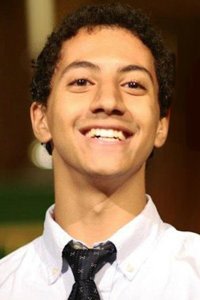
Welcome to Zaatari. Here, in the world’s largest refugee camp, some of the most forgotten and vulnerable people in our society live. Having fled death, disaster, and destruction, families spend their lives together in small structures with minimal food and water — much less educational and enrichment opportunities. The world is in the midst of the greatest refugee crisis in history, and camps like Zaatari are in many ways desolate places due to their lack of resources, as well as the violence that brought their communities together in the first place.
But dig a little deeper beyond this image of Zaatari, the one most often propagated in the media, and you’ll find — wonderfully — that the difficult conditions are only a part of the story. A small part. Look deeper into the lives of the residents of Zaatari and other refugee camps around the globe and you’ll see living examples of how the spark of innovation — and of the pure joy that comes with it — shines the brightest in the seemingly darkest of moments. The 80,000-strong Zaatari community alone has given birth to 3,000 new ventures created by inspiring entrepreneurs. Women like Um, who fled from the Syrian civil war and created a wedding and beauty store to infuse dignity and much-needed joy in the lives of her neighbours. And around the world at other camps, women like Masika, who left Congo after her husband was murdered and made her way to Ethiopia, where she has created and developed a bakery and restaurant catering to her community.
If the people in refugee camps are one-dimensionally portrayed as victims, the refugees living in host countries are often one-dimensionally portrayed as villains. They are painted as, at best, useless individuals who can’t learn the language and are taking our jobs; at worst they are terrorists who are tearing at the traditional moral fabric of countries across the globe. The economic narrative around the refugee crisis in Europe, the US, and elsewhere is also a harsh one — that there exists a choice between sacrificing economic wellbeing to compassionately integrate refugees, or building walls to leave them on the other side of the border or at the shore. Nothing in between.
Here the narrative is simply inaccurate. Beyond the fact that refugees are virtually never perpetrators of domestic terrorist attacks, they are bringing creativity and ideas to their new home countries at a rapid pace — usually creating new ventures at a rate far higher than natural-born residents. And though there is surely an economic cost to welcoming refugees into a nation, it is often outweighed dramatically by both the cultural enrichment and business growth that refugees can bring. They are refugee-entrepreneurs like Razan, who has persevered through the violence of civil war to launch and scale a cheese company in the UK. Or Adam, who has overcome his disability to create an electronics repair company to cater to his new community in Uganda.
This book strives for a more genuine narrative. In truth, it should be no shock that refugee camps and host communities are becoming hotbeds of entrepreneurship. Refugees are some of the most resilient, brave, and inspired human beings on this planet. Finally beginning to catch wind of the unique, innovative abilities of refugees, a handful of organizations like Kiva and the Alight Fund — which together launched the Global Refugee Fund just last year — are raising significant capital to deploy toward refugee-entrepreneurs’ ideas. But more is needed. Rather than lamenting the refugee crisis, looking down upon refugees, or refusing to welcome them, institutions across sectors should join together and build on this movement — catalysing refugee-entrepreneurs’ ideas on the path to inclusive economic growth.
*************************************************
Life in Zaatari is structured: each resident gets four pieces of bread daily and a food allowance of about £20 a month. The only formally available jobs are related to administering the camp or working for on-site non-governmental organisations. We might be forgiven if we thought this was not the best place to launch a wedding and beauty supply company.
But that’s what makes Um different from us.
Um, which means “mother” in Arabic, had owned her own wedding dress store and beauty shop in Syria, before it was burnt to the ground. But just six months after arriving at Zaatari, she was back at it — knowing that the residents of the camp could use her services now more than ever. She launched her new wedding and beauty store to create a sense of normalcy in her fellow community members’ lives, and to celebrate their dignity — a dignity that cannot be stolen from them no matter the difficulty of their circumstances.
After managing to scrape together the money needed to start her operations, Um is changing lives in the camp today. As she told the UNHCR, the UN refugee agency: “Life goes on, even when you’re a refugee. People marry. This shop has been in action for 13 months and I’ve prepared about 700 brides in that time. The best thing about having the business is that I interact with many people, it takes me away from all of the misery that we have been living in.”
****************************************************
Emerging from the rubble of our collective global refugee crisis are some of the world’s most inspiring stories: refugees turning their unimaginable pain and misfortune into profound reinvention. These refugee-entrepreneurs teach us to remember that human beings are multi-dimensional, and often so much more than how they are portrayed. Author Chimamanda Ngozi Adichie put it well:
“The consequence of the single story is this:
“It robs people of dignity.
“It makes our recognition of our equal humanity difficult.
“It emphasises how we are different rather than how we are similar.”
Moreover, these refugee-entrepreneurs offer a new source of hope for significant economic growth and business opportunity all over the world — transforming a crisis into a beautiful opportunity. In the midst of this historic moment, we together have the opportunity to become a part of the stories of refugee-entrepreneurs around the world, creating a spark of innovation in some of the darkest circumstances. We have the chance to help catalyse a movement in our nations that recognises the gifts refugees provide to our communities, and empowers them to uplift those communities through their creativity, energy, and perseverance.
And we as a global community should seize that opportunity. Because at stake if we continue pushing a “single story” is not just the dignity of refugees around the world — it is the collective dignity of our generation.
Andrew Leon Hanna is a student at Harvard Law School and the co-founder of DreamxAmerica, a social venture that joins filmmaking and impact investing to support immigrant entrepreneurs in the US
One Billion in Reserve
Integrating disabled and neurodivergent lives in the modern workplace
By Piyumi Kapugeekiyana
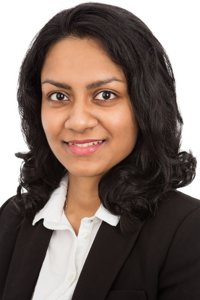
By tradition, astronomy is a highly visual discipline. From the naked-eye study of the stars in early civilisations to modern visualisation software for making sense of large astrophysical data sets, the practice of astronomy favours those who can see.
What does this mean for a visually-impaired person interested in the science?
For Wanda Diaz Merced, this question was not merely theoretical. Merced, an astrophysicist, was diagnosed with diabetic retinopathy in her early 20s. At the time, she was studying physics at the University of Puerto Rico. Confronted with encroaching blindness, Merced felt she had to choose between changing subjects and abandoning her education altogether.
It took three elements to transform her circumstances: the intervention of a peer, the availability of a unique work placement and the influence of a mentor. One day, at a conference, Merced crossed paths with a researcher who told her about the Access internship programme at Nasa’s Goddard Space Flight Center in Maryland — an internship aimed at people with disabilities. At Goddard, she met Robert Candey, a computer scientist using sound to explore numerical data sets.
During her first summer, Merced worked with Candey to advise on and test xSonify, a tool that mapped scientific data to acoustic sequences. Using a process called “sonification”, xSonify converted astronomical data into sound; utilising pitch, volume and rhythm to distinguish between different values in the data set. The tool effectively extended the use of Nasa’s space physics data collection to visually-impaired students and researchers.
Merced stayed the course after that first project and went on to pursue a PhD investigating sound as an adjunct to current data visualisation techniques, particularly in space physics data masked by noise. Later, in a compelling Ted talk in 2016, Merced described her use of sonification to study gamma ray bursts (GRBs), the most powerful electromagnetic events known to occur in our universe. Today, sonification is increasingly adopted as a tool for analysing space physics data, even by sighted astronomers.
**************************************
Why is this story important?
A study by The Return on Disability Group reveals that there are at least 1.31 billion people with disabilities (PWD) worldwide. Individuals with learning or cognitive differences — the neurodivergent (ND) — constitute most of this group (71 per cent). Collectively, “PWD-ND” constitute a talent pool with significant potential, yet much of it is held in reserve or under-utilised.
The last 30 years have witnessed strides in global civil rights legislation, which has helped these communities gradually integrate into the economy as consumers and employees. Even so, large gaps still exist. Only 24 per cent of the largest US companies have publicly observable activity in relation to PWD. Among the 28 EU member states, the last labour force survey (2011) revealed that 17.4 per cent of people were unemployed because of work limitations associated with disability. (Compare this with the 9.4 per cent unemployment rate for those without health problems or activity difficulties.) The challenges are more pronounced in some parts of the world. The African Studies Centre in Leiden reports that 70 to 80 per cent of working-age Africans with disabilities are unemployed. In Asia and the Pacific, PWD are two to six times less likely to be employed than people without disabilities, according to 2017 figures from the United Nations Economic and Social Commission for Asia and the Pacific (Unescap).
Against this backdrop, Merced’s story is an important reminder of how the innovations and insights derived from disability can benefit a wider community. Her story also illustrates the unique adaptations and skills that many PWD-ND bring to the modern workplace. From a macro perspective, there is an economic cost to our failure to integrate the disabled and the neurodivergent. In the US, for example, an estimated $150bn in tax revenues is lost annually due to the limited utilisation of PWD in the US workforce (Return on Disability Group, 2016). It is also estimated that the GDP of many Asian and Pacific countries could rise between 1 and 7 per cent with disability-inclusive employment, according to Unescap.
While the world’s PWD-ND only command about $1.2tn in disposable income, they are connected to approximately 2.4bn friends and family members who control over $6.9tn in disposable income (Return on Disability Group, 2016). Organisations cannot afford to be oblivious to the opportunity presented by this collective group of employees and consumers.
***********************************************
One Billion in Reserve will make a case for rethinking both work and workplaces with a view to including the global talent pool of PWD-ND — long held in reserve. This is not about corporate altruism. It’s about pushing companies to achieve the double-bottom-line: to have both economic and social impact.
From visually-impaired medical tactile examiners for early breast cancer screening, to software testers on the autism spectrum, to performing arts troupes with hard-of-hearing dancers, this book is also about taking a fresh look at ability in relation to work. The business challenges of the future cannot be solved with the skills and mindset of the past. Why shouldn’t we explore new and innovative approaches to work?
Still, leaders do not always have a practical understanding of how to integrate disability and neurodivergence in the workplace. Meanwhile, the average individual wanting to champion disability inclusion from the bottom up will invariably struggle with the corporate demand for a business case. These dynamics, in turn, have long limited the career options for people with disabilities and the neurodivergent. To change the narrative, we need inclusion success stories we can relate to our organisations, replicable business models, and practical ways of tackling the gamut of operations from recruitment to retention.
One Billion in Reserve, then, will be a layperson’s guide to navigating the disability and neurodivergence inclusion journey in their workplace. Facilitating inclusion will require us to revisit preconceptions about the best way to work and to organise workplaces. It will require organisations to co-create new ways of working in collaboration with PWD-ND.
This book will draw upon inclusion case studies from major global companies and a new wave of small inclusive businesses across industries. It will also seek insights from people with disabilities, the neurodivergent, as well as disability advocates and scholars.
Piyumi Kapugeekiyana is a senior consultant and head of research at Stax, a global strategy consulting firm
This article was amended to show the numeric title of “25 Million Sparks”
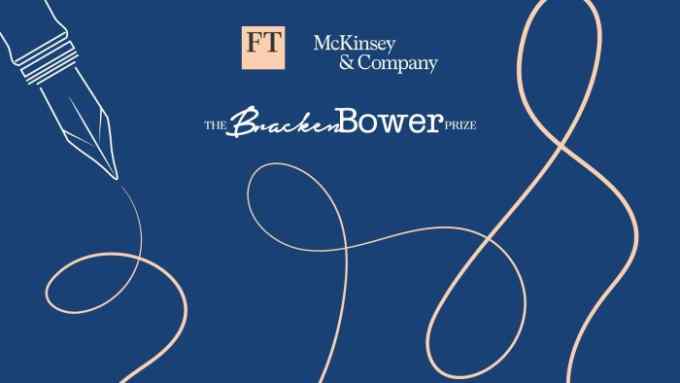
Comments